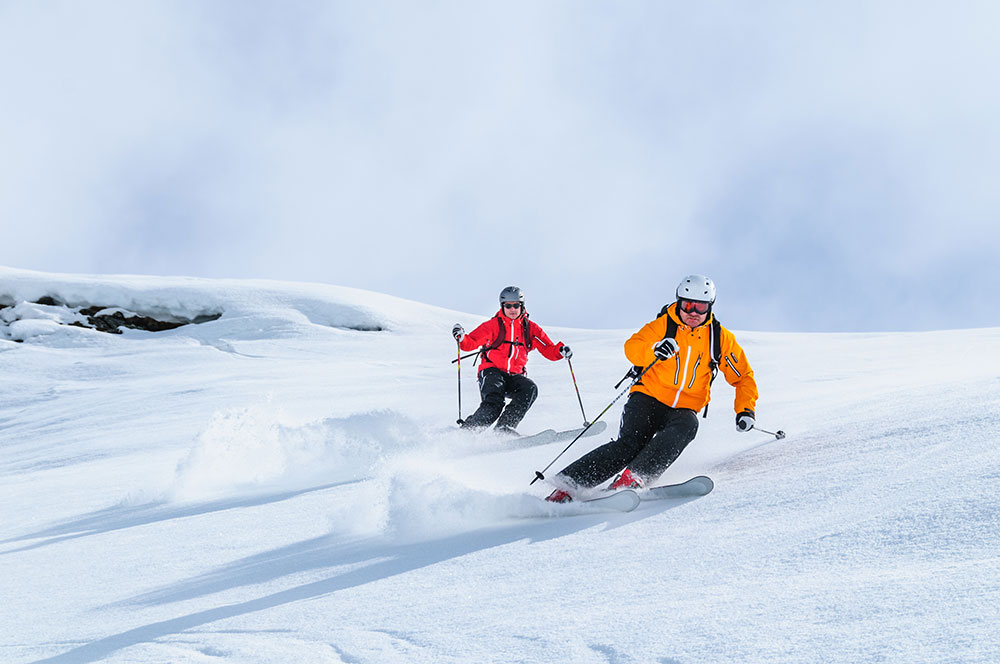
Is ACL Surgery Required After an ACL Injury from Skiing?
ACL injuries are common among skiers. Proper form and maintaining a strong core, glutes, quads, and hamstrings can help prevent ACL injuries. Most skiing related ACL injuries occur as a result of a twisting fall or collision. In some cases, an ACL injury can also occur by catching an edge in the snow while turning.
Unfortunately, most ACL tears are full thickness tears, not partial tears that might be able to heal on their own. For active patients who want to get back to full activity, surgery is usually required in order to stabilize the knee. ACL doctor Richard Cunningham, MD is an expert at diagnosing and treating ACL injuries in skiers and snowboarders.
How are ACL Injuries Classified?
ACL injuries are classified as follows:
- Grade I: Minor sprain
- Grade II: Partial tear with some instability
- Grade III: Complete tear of the ACL with gross instability
A grade I injury will likely respond to non-surgical treatment. This includes resting, ice therapy, elevation and compression, and physical therapy. At times a platelet rich plasma (PRP) injection will be considered.
Grade II and III ACL injuries typically require surgical treatment as these tears do not heal well. However, in some cases, a grade II partial ACL tear can heal on its own. When there are additional ligament tears, such as an associated MCL tear, partial ACL tears do not heal well. Recreational and competitive skiers with grade II and III ACL tears usually opt for surgery in order to ensure good knee joint stability so that they can return to cutting and pivoting sports such as skiing, feeling confident that their knee will not give out.
When Can You Start Skiing After ACL Surgery?
Typically, it takes eight to nine months to return to alpine skiing after ACL reconstruction surgery. However, patients are riding a bike within weeks of surgery and hiking and jogging at 4 months from surgery. On average, a new ligament graft takes about six months to completely heal. However, one’s full strength recovery can take 8-9 months. During the recovery process, it is important to stick to a regimented physical therapy plan. During physical therapy, patients work on improving balance and building back strength in the injured leg. Many ski racing athletes with a reconstructed ACL can return to competition within a year.
What are the Chances of Tearing Your Reconstructed ACL Again?
The odds of re-injuring the ACL while skiing or doing other sports after a full recovery is no higher than tearing the ACL in your other leg if your surgery is done by a surgeon who does a large volume of ACL surgery and who does a technically sound surgery. After reconstruction of the ACL, research shows there is a 3% to 6% probability of reinjury, but this number is lower if your surgery is done by a high volume ACL surgeon. The choice of the tendon graft used to reconstruct your ACL is also critical. Allografts (donor tendon) retear at a much higher rates compared to autograft (borrowing a piece of tendon from the patient). Physical therapy is also a critical component of a good outcome. Dr. Cunningham also places patients in a sports brace when cleared to resume skiing or snowboarding for one year once cleared. Wearing this brace can also decrease the incidence of re-injury.
Experience and expertise are critical when considering your ACL doctor. Richard Cunningham, MD, ACL Doctor at Vail Summit Orthopedics & Neurosurgery is an expert at treating ACL injuries and getting skiers back on the slopes. Contact him today: 970-569-3240.
